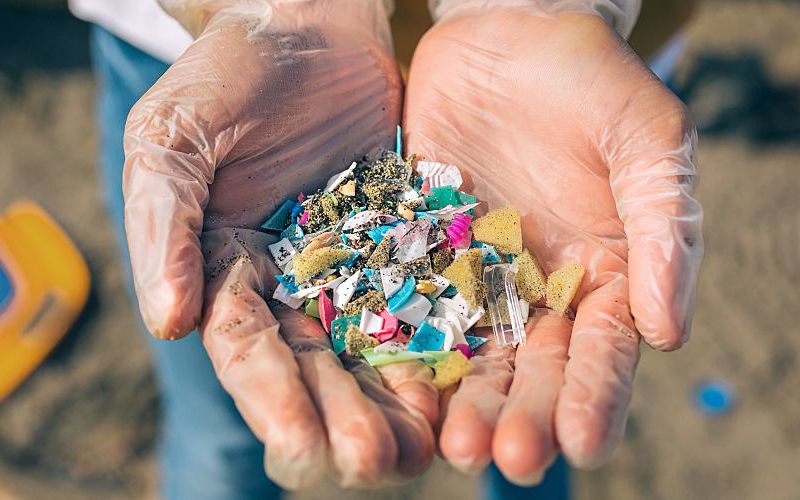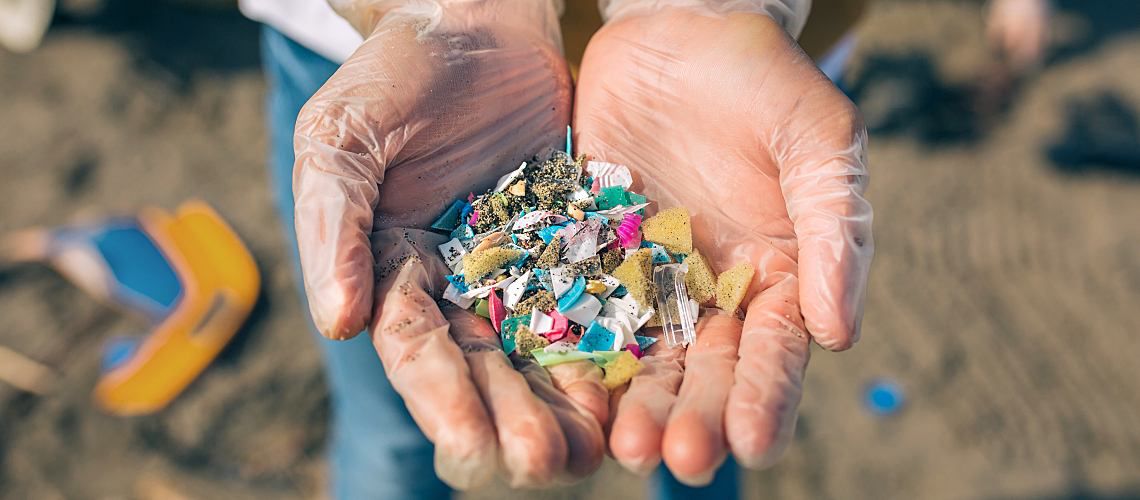California Defines Microplastics for Drinking Water Testing


The California State Water Resources Control Board recently adopted an official definition of microplastics in drinking water, becoming the first government agency in the country to do so. Defining this type of plastic represents a step toward standardizing methods for monitoring and studying it, according to the State Water Board.
Other agencies at the state, national, and international level have developed definitions for microplastics, the board points out, but California's new one specifically focuses on drinking water. The State Water Board published their final resolution along with the definition on July 27.
New Definition for Microplastics
The State Water Board defines microplastics in drinking water as "solid polymeric materials to which chemical additives or other substances may have been added, which are particles (that) have at least three dimensions that are greater than 1 nm and less than 5,000 micrometers (µm). Polymers that are derived in nature that have not been chemically modified (other than by hydrolysis) are excluded."
California's definition specifies that polymeric material means "a particle of any composition with a continuous polymer surface coating of any thickness, or a particle of any composition with a polymer content of greater than or equal to 1% by mass."
The State Water Board also presents different designations for plastic particles based on their size:
- Nanoplastics: 1 nm to less than 100 nm.
- Sub-micron plastics: 100 nm to less than 1 µm.
- Small microplastics: 1 µm to less than 100 µm.
- Large microplastics: 100 µm to less than 5 mm.
- Mesoplastics: 5 mm to less than 2.5 cm.
- Macroplastics: Greater than 2.5 cm.
California's Senate Bill 1422 was passed in 2018 and required the State Water Board to adopt a microplastics definition before July 1, 2020. Under the legislation, the board also has to complete the following tasks on or before July 1, 2021:
- Adopt a standard methodology to be used in the testing of drinking water for microplastics.
- Adopt requirements for four years of testing and reporting of microplastics in drinking water, including public disclosure of those results.
- If appropriate, consider issuing a notification level or other guidance to aid consumer interpretations of the results.
- Accredit qualified laboratories in California to analyze microplastics.
The new microplastics definition also comes in response to Senate Bill 1263 that passed in 2018, which required the California Ocean Protection Council to adopt and implement a statewide microplastics strategy. State Water Board members say they're collaborating with the council and the Southern California Coastal Water Research Project, a public research and development agency, to standardize methods for monitoring microplastics in drinking water as well as in surface water, sediment, and fish tissue.
Concerns About Plastics in Drinking Water
There are multiple known sources of microplastics, which include microfibers from synthetic fabrics and microbeads in personal care and household cleaning products, according to a 2019 San Francisco Public Utilities Commission (SFPUC) guide. The commission notes that microfibers can get released from synthetic textiles during machine washing and then enter water supplies. Larger plastic waste can also break down into smaller particles over time.
"Regardless of their source, because of their size and ubiquity, microplastics often end up in the water or the environment more broadly," the National Law Review reports. "As a result, microplastics are increasingly the subject of research and public concern, drawing attention from federal legislators and international bodies."
Citing 2018 research published in the journal Science of the Total Environment, the SFPUC calls municipal wastewater treatment plants "a significant source of microplastics into water bodies in the United States." In analyzing raw and treated water, Czech scientists found microplastics in all their samples. They also reported that microplastics smaller than 10 µm were the most plentiful, accounting for as much as 95% of the particles.
"It is unknown whether there are any human health effects from exposure to microplastics in drinking water," the SFPUC states. "There is some evidence that microplastics behave like natural particles and adsorb and transport contaminants, however, more research is needed to determine the effects of ingestion of microplastic particles and whether there are additional effects from contaminants contained within plastics."
European Proposal Would Restrict Microplastics
In January 2018, the European Chemicals Agency (ECHA), an agency of the European Union, began studying a possible EU-wide restriction on intentionally added microplastic particles. A year later, the ECHA introduced a proposal that they estimated would prevent the release of 500,000 metric tons of microplastics over the two decades following its introduction.
This year, the ECHA's Committee for Risk Assessment published an opinion that supports the proposal overall and offers several specific recommendations. One was that a lower size limit of 100 nm wouldn't be needed since the restriction could be enforced in other ways. The ECHA's Committee for Socio-economic Analysis also backed the proposal, but they encouraged adopting the lower size limit for easier enforcement until other analytical methods become available. The agency says that the joint opinion of both committees should be ready before the end of this year.






